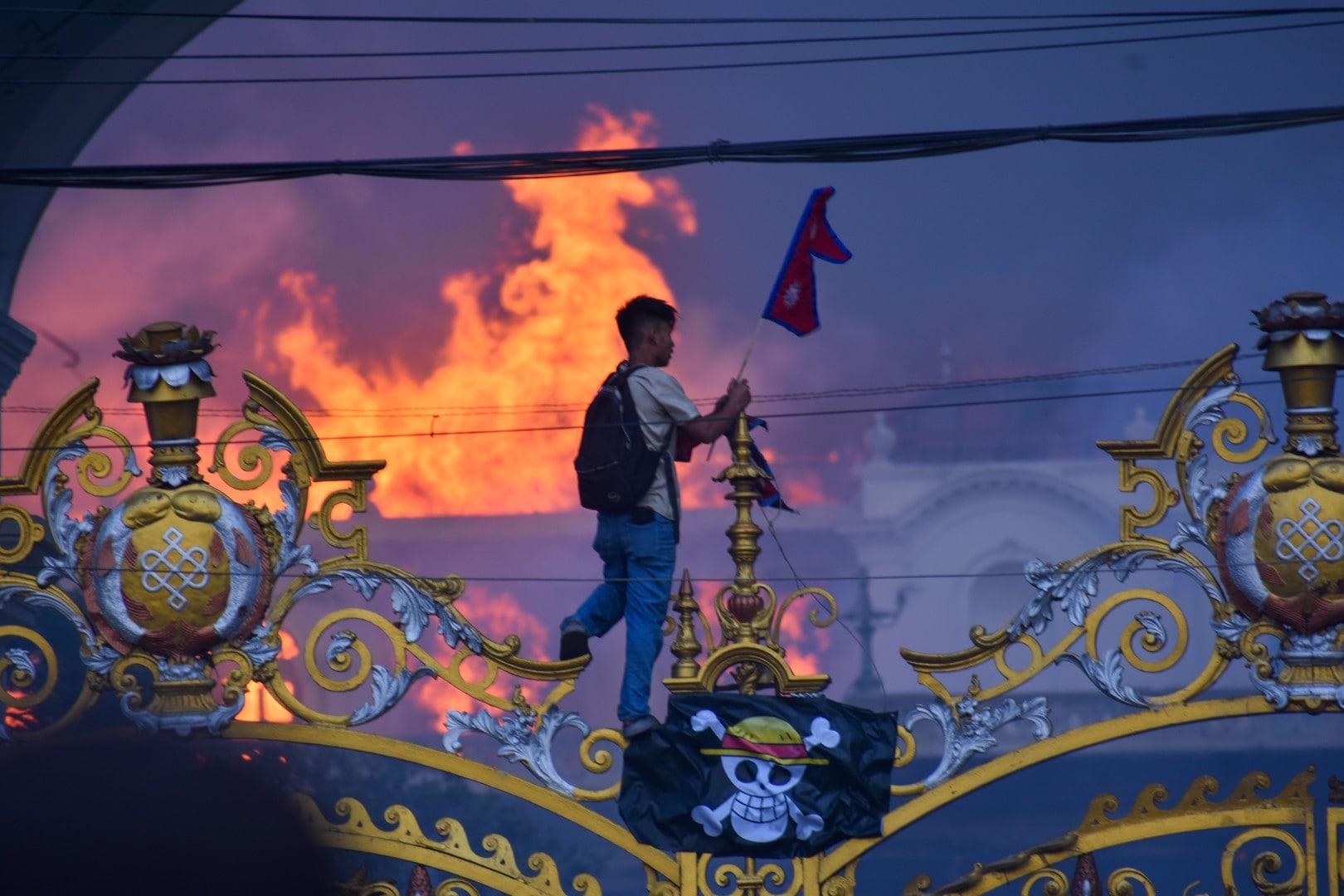Nepal faces turmoil as protests over corruption, unemployment, and social media bans turn deadly, leaving 51 dead. Experts warn of Deep State involvement, China-US rivalry, and urge India to adopt a ‘wait and watch’ approach.
New Delhi: Nepal has been on edge this week after a deadly wave of protests shook the Himalayan nation, leaving at least 51 people dead and over 1,000 injured. What began as anger over corruption and a sudden ban on 26 social media platforms has spiraled into the worst violence since the end of the Maoist civil war and the abolition of the monarchy in 2008. Amid the chaos, a new face has emerged at the forefront of Nepal’s fragile political transition — Sushila Karki, a Banaras Hindu University (BHU) alumna and the country’s first woman Chief Justice, chosen by Gen Z protesters to head the interim government.
A Nation on Edge
In recent days, Kathmandu’s streets — normally bustling with vendors, tea stalls, and families — have been patrolled by the army. A curfew, enforced since Tuesday’s violent escalation, has left residents fearful. For many, Friday’s temporary lifting of curfew was a chance to stock up on food and essentials.
The protests, largely driven by Nepal’s youth, are being spearheaded by a group loosely referred to as “Gen Z.” Their movement reflects deep frustrations: chronic unemployment, corruption, and political instability. Discussions within Gen Z remain heated. Their demand is not just for leadership change but a complete political overhaul.
Youth activist Sudan Gurung, representing the protesters, reiterated: “Our first demand is the dissolution of parliament.”
Despite disagreements between rival factions, 73-year-old Sushila Karki has emerged as a consensus candidate. Karki, speaking to AFP, stressed unity and continuity. “Experts need to come together to figure out the way forward,” she said. “The parliament still stands.”

Expert Views: The Deep State Question
The sudden collapse of Nepal’s government has raised questions in New Delhi. Asianet Newsable English consulted experts to uncover what went wrong in Nepal, explore possible Deep State involvement, and assess India’s next steps. Experts are of the opinion that India should adopt ‘Wait and Watch’ mode in the evolving situation.
Defence and strategic affairs expert Major General Sudhakar Jee (Retd) believes the deeper crisis is rooted in structural weaknesses.
“Behind the facade of youth’s unrest on account of banning of 26 social media platforms lies a backdrop of high percentage unemployment, frequent change of government, high inflation, economic slowdown, corruption among others are fertile conditions for strategic rivalry and global power competition between the United States and China,” he told Asianet Newsable English.
Asked about the involvement of the Deep State, South Asia expert Prof. Dhananjay Tripathi of South Asian University struck a cautious note.
“It would be too early to say about the Deep State’s involvement. But we can also not deny as lots of NGOs are operating in Nepal and huge numbers of youths are associated with them and the call for the protest was also given by them only. Their anger and anguish were genuine and must have been used by some forces,” he said.
Major General Sudhakar Jee (Retd), however, was unequivocal.
“China has made deep penetration into the way of life of people in the immediate neighbourhood of India as a strategic encirclement of India.”
“The US in order to extend its hegemony in South Asia to Contain, Counter and Confront China’s hegemony, is making all out efforts to reduce China’s dominance in the region,” he added.
The retired officer went further, linking Nepal’s turmoil to India’s future.
“The ultimate aim of the Deep State is to retard the economic growth of India so that a second China is not created that may challenge the existing super power (Thucydides Trap – no established power will ever allow any rising power to come up to its footing – Prof Allison).”

What Should India Do?
With Nepal in flux, experts say New Delhi should act with restraint.
Prof. Tripathi said, “India should wait and watch now as there is nothing much to do in such a scenario. We should engage with the interim government, when it is formed.”
Major General Sudhakar Jee (Retd), meanwhile, urged vigilance stating, “India needs to remain vigilant and be prepared to provide assistance if invited to maintain law and order and restore normalcy and stability. Assistance in conducting re-election and preventing refugee problems along the border.”
A Fragile Future
The unrest has left scars on Nepal’s fragile democracy. Parliament buildings and even a Hilton Hotel were set on fire on Tuesday. Former PM KP Sharma Oli resigned, and more than 12,500 prisoners escaped jails in the chaos, with hundreds of weapons looted.
The protests reflect longstanding frustrations in a young nation where more than two-fifths of people are aged 16-40 and unemployment among 15-24-year-olds is over 20%.
For now, Nepal waits. The army enforces quiet on Kathmandu’s streets, but simmering anger remains. The youth movement wants a radical shift, while leaders seek consensus around figures like Sushila Karki.
